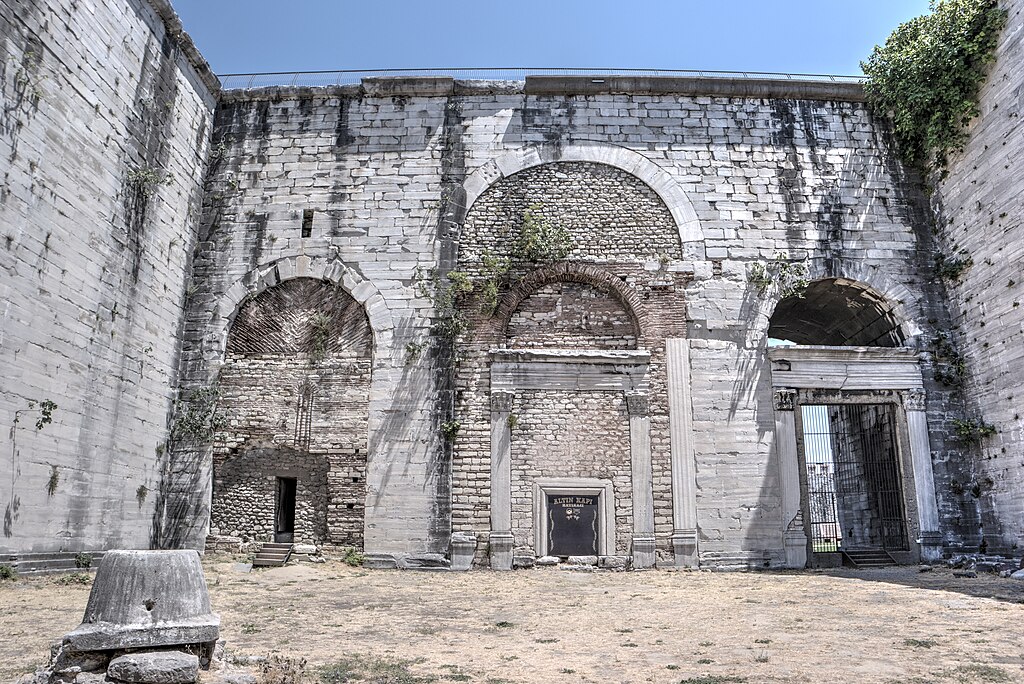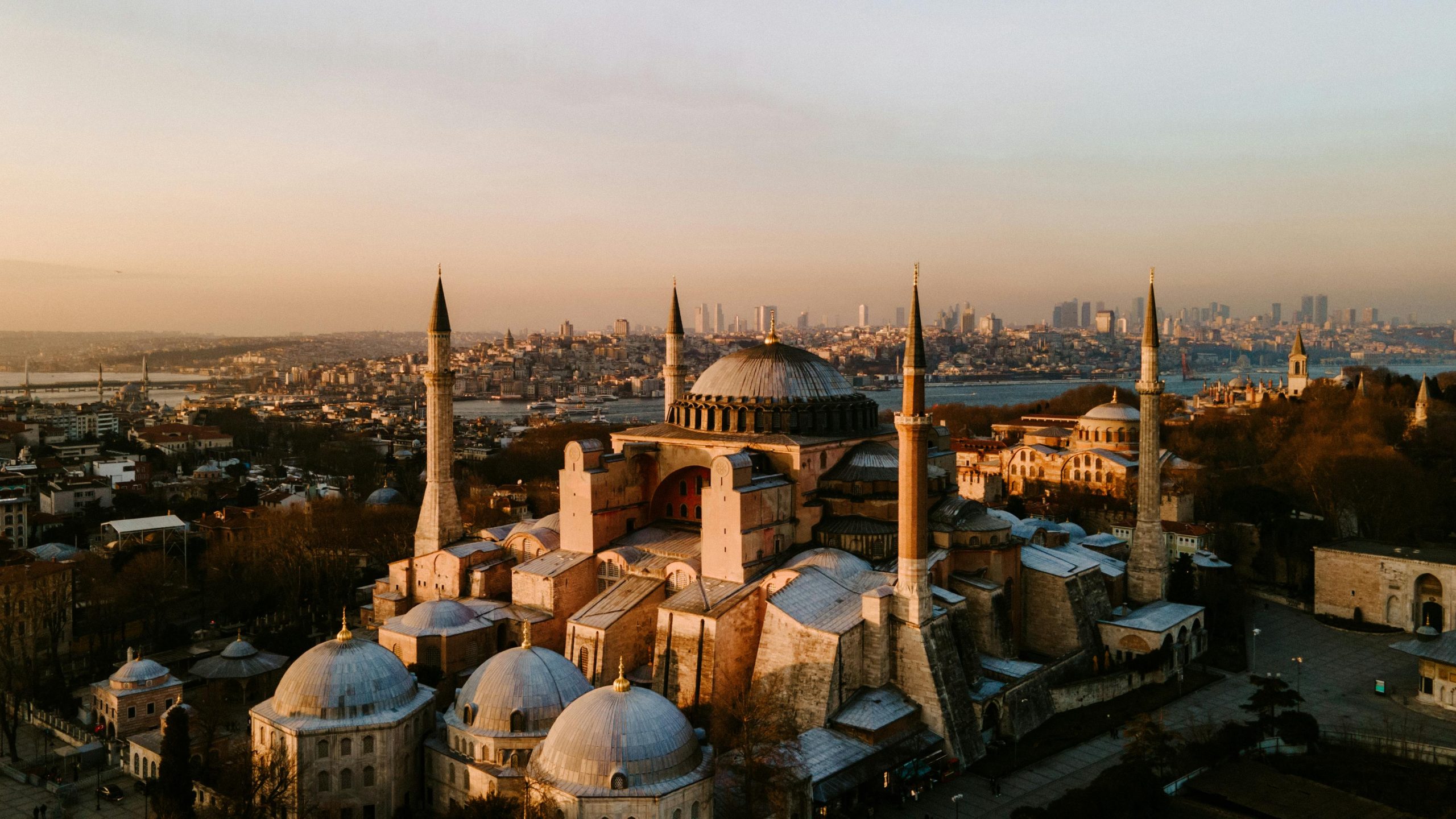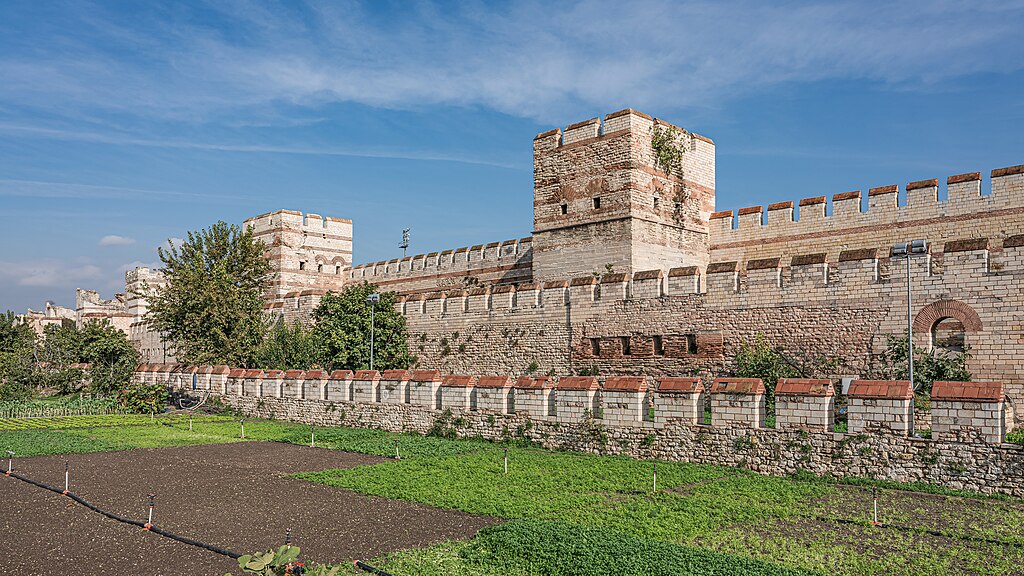Golden Gate, Istanbul
City Gate in Istanbul

At the southwestern edge of Istanbul's ancient Theodosian Walls stands the Golden Gate, one of the city's most majestic relics from the Byzantine Empire. Built in the early 5th century, likely under Emperor Theodosius II, it served as the ceremonial entrance to Constantinople — the portal through which victorious emperors, royal processions, and foreign dignitaries entered the capital. Over time, it became more than just an architectural marvel; it symbolized the might, wealth, and spiritual authority of the Byzantine world. Today, it remains one of the top sights in Istanbul for those intrigued by the city's imperial past.
Once covered in gleaming white marble and crowned with statues of emperors and angels, the Golden Gate was designed to awe all who passed beneath it. Its ceremonial function later gave way to a military one, as the Byzantines fortified the structure into a small fortress — a transformation that ensured its survival. The site is now a great place to visit on a walking tour of Istanbul's Theodosian Walls, revealing layers of history, faith, and strategy carved into stone.
History and Significance of the Golden Gate
Historians generally agree that the Golden Gate was constructed around 390–410 AD, probably during the reign of Theodosius II. Located at the southern end of the Theodosian Walls — the formidable defense system that protected Constantinople for over a thousand years — the gate served as the empire's official triumphal arch. Polished white marble blocks, assembled without mortar, formed three arched passages supported by twin towers. Its gilded doors and bronze decorations reflected the sun, making it visible from the sea and lending it the name “Golden.”
The gate's purpose was largely ceremonial. Byzantine emperors entered through it after military victories or coronations, greeted by cheering crowds and church officials. Notable processions included those of Emperor Heraclius after his campaign against Persia and Basil II after his triumph in Bulgaria. Even popes and envoys passed through its arches — among them Pope Constantine in 710 AD. As the Byzantine Empire weakened, the gate's role changed. It was walled off for defense and incorporated into the fortress of Yedikule (the “Seven Towers”), constructed by Sultan Mehmed II after his conquest of Constantinople in 1453.
Things to See and Do at the Golden Gate
Although many of its original sculptures and gilded ornaments are gone, the Golden Gate still commands attention with its grand, weathered marble arches and robust towers. Visitors can walk along the outer sections of the Theodosian Walls, exploring the Yedikule Fortress complex, which integrates the gate into its defensive design. The sheer scale of the walls, along with panoramic views over the Sea of Marmara, gives a sense of the formidable power this entrance once symbolized.
Nearby plaques describe the site's dual life as both ceremonial and military architecture. Look closely at the marble blocks — their seamless fit demonstrates ancient Roman engineering at its finest. From outside the gate, it's easy to imagine the processions that once passed here: soldiers carrying standards, bishops swinging incense, and emperors crowned in gold. For photographers and history enthusiasts alike, the Golden Gate is a highlight of any exploration of the city's ancient defenses.
How to Get There
The Golden Gate is located near the Yedikule Fortress in Istanbul's Fatih district, at the southern end of the Theodosian Walls. The closest Marmaray train stop is Kazlıçeşme, from which it's about a 15-minute walk. You can use the official TCDD Taşımacılık website to check schedules, compare routes, and purchase tickets for Turkey's national and regional trains operated by TCDD. For a more streamlined experience (especially if you prefer an English interface or want to compare across countries), we recommend using Omio, which allows you to easily compare prices, schedules, and book train tickets across Turkey and the rest of Europe — all in one place. For drivers, there is limited street parking near Yedikule Hisarı Caddesi, and small paid car parks are available in the neighborhood. If you are looking to rent a car in Turkey I recommend having a look at Discover Cars, first, as they compare prices and review multiple car rental agencies for you. The site can also be reached by bus or taxi from Sultanahmet, following Kennedy Avenue westward along the old city walls.
Practical Tips on Visiting the Golden Gate
- Best time to visit the Golden Gate: Early morning or late afternoon for good lighting on the marble façade.
- Entrance fee in Euros: Free (the area around Yedikule Fortress may charge a small entry fee if open).
- Opening hours: The gate can be viewed at all times; fortress hours vary.
- Official website: Not applicable.
- How long to spend: 30–45 minutes, or longer if exploring the surrounding walls.
- Accessibility: Uneven ground near the gate; wear sturdy footwear.
- Facilities: Limited nearby; cafés and rest areas in Yedikule neighborhood.
- Photography tip: Capture the gate framed by the old walls or from below to emphasize scale.
- Guided tours: Included in several Byzantine wall and fortress walking tours.
- Nearby food options: Small local eateries serving Turkish kebabs and meze near Yedikule station.
Is the Golden Gate worth visiting?
Yes. The Golden Gate is one of the best places to see in Istanbul for anyone drawn to its Byzantine heritage. More than a stone monument, it represents the grandeur and resilience of a civilization that once ruled the known world. Standing before its marble arches, you can still sense the echoes of imperial processions that once entered the New Rome in triumph.
FAQs for Visiting the Golden Gate
Can visitors walk through the gate today?
No, the original archways are sealed, but visitors can walk around and view them from outside.
Is the Golden Gate part of Yedikule Fortress?
Yes, it was later incorporated into the fortress by the Ottomans after 1453.
Are there any original statues left?
Unfortunately, the statues of Theodosius I and other decorations were lost due to earthquakes and looting.
Is it safe to visit the area?
Yes, it's a quiet residential area and generally safe during daylight hours.
What is the best way to explore the Theodosian Walls?
Walking from Yedikule toward Edirnekapı gives the best overview of the ancient defenses.
Nearby Attractions to the Golden Gate
- Yedikule Fortress – A 15th-century Ottoman fortress incorporating the Byzantine Golden Gate.
- Theodosian Walls – The monumental defensive system that protected Constantinople for a millennium.
- Belgradkapı – Another historic gate along the old city walls, rich in history and architecture.
- Gülhane Park – A former royal garden near Topkapi Palace, perfect for a relaxing stroll.
- Hagia Sophia – The legendary Byzantine cathedral-turned-mosque in the heart of the Old City.
The Golden Gate appears in our Complete Guide to Visiting Istanbul!
This website uses affiliate links which may earn a commission at no additional cost to you!
Visiting Golden Gate
The gate can be viewed at all times; fortress hours vary.
Free
Nearby Attractions
- Yedikule Fortress (0.0) km
Castle in Istanbul - Marble Tower (0.5) km
Tower in Istanbul - Xylokerkos Gate (0.8) km
City Gate in Istanbul - Gate of the Spring (1.4) km
City Gate in Istanbul - Gate of Rhesios (2.3) km
City Gate in Istanbul - Panorama 1453 History Museum (2.8) km
Museum in Istanbul - Gate of Saint Romanus (3.1) km
City Gate in Istanbul - Fifth Military Gate (3.4) km
City Gate in Istanbul - Grand Bazaar (4.3) km
Bazaar in Istanbul - Suleymaniye Mosque (4.3) km
Mosque in Istanbul


